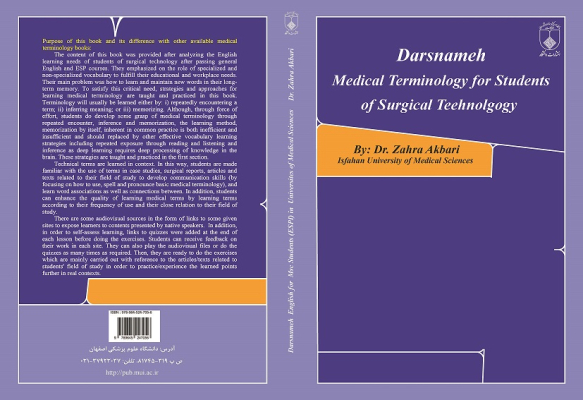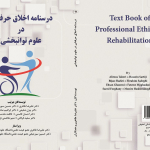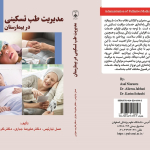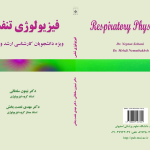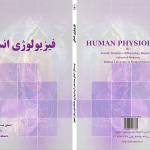Darsnameh Medical Terminology for Students of Surgical Technology
نویسنده: دکتر زهرا اکبری
ناشر: انتشارات دانشگاه علوم پزشکی اصفهان با همکاری انتشارات مانی
تعداد صفحات: 236 قطع: وزیری
نوبت چاپ: اول تاریخ چاپ: 1402
Preface
The Surgical Technologist is a professional surgical scrub who assists in surgical operations under the direct supervision of the surgeon. An operating theater (also known as an operating room (OR), operating suite, operation theatre or operation suite) is a facility within a hospital where surgical operations are carried out in a sterile environment. Different professions have different languages.The words, or terms, which make up the language of medicine are referred to as the terminology of the medical field, or medical terminology.
I. Why is is necessary to learn medical terminology?
To provide more efficient care, physicians or nurses may write quickly and scribble common abbreviations. All members of the care team should be able to understand these abbreviations and terms to provide the best care.
By studying Medical Terminology, students will develop a fluency in the highly specialized language of health. They will understand the origin and importance of acronyms like HIPAA and gain confidence to perform in a field where the difference between the right and wrong word can change a life. Plus, if they are planning on entering the health care field, they will be expected to speak the same language as other other health care providers. It allows all medical professionals to understand each other and communicate effectively.
It takes more than memorization to learn medical terminology: Understanding the meanings of prefixes and suffixes along with root words will give you the ability to determine a word's meaning without having to look it up. These include the ability to change meaning in a primary root, or change the part of speech in a primary root. The meaning part can allow you to precisely change meaning of the primary root, with known prefixes or suffixes. The more you apply these prefixes or suffixes to different primary roots, the more practice you develop in this bounding
process. You can also modify the part of speech, or more eloquently transform the part of speech from one to another.
It requires working not with the word alone, but also taking into account that word in relation to other words in a sentence. Knowing the meaning of the word parts often makes it possible to figure out the definition of an unfamiliar medical term.
While medical terms may appear intimidating at first glance, once the basic word structure is understood and the definitions of some common word elements are learned, the meaning of thousands of medical terms can be easily parsed. In other words, Understanding the meanings of the most common prefixes can help us deduce the definition of new words that we run across in our reading. And in this way, you can expand your vocabulary.
Today, medical English is the dominant language for international communication. Most influential medical journals are written in English and it has become the language of choice at international conferences.
II. Purpose of this book and its difference with other available medical terminology books: The content of this book was provided after analyzing the English learning needs of students of surgical technology after passing general English and ESP courses. They emphasized on the role of specialized and non-specialized vocabulary to fulfill their educational and workplace needs. Their main problem was how to learn and maintain new words in their long-term memory. To satisfy this critical need, strategies and approaches for learning medical terminology are taught and practiced in this book. Terminology will usually be learned either by: i) repeatedly encountering a term; ii) inferring meaning; or iii) memorizing. Although, through force of effort, students do develop some grasp of medical terminology through repeated encounter, inference and memorization, the learning method, memorization by
itself, inherent in common practice is both inefficient and insufficient and should replaced by other effective vocabulary learning strategies including repeated exposure through reading and listening and inference as deep learning requires deep processing of knowledge in the brain. These strategies are taught and practiced in the first section.
Technical terms are learned in context. In this way, students are made familiar with the use of terms in case studies, surgical reports, articles and texts related to their field of study to develop communication skills (by focusing on how to use, spell and pronounce basic medical terminology), and learn word associations as well as connections between. In addition, students can enhance the quality of learning medical terms by learning terms according to their frequency of use and their close relation to their field of study.
There are some audiovisual sources in the form of links to some given sites to expose learners to contents presented by native speakers. In addition, in order to self-assess learning, links to quizzes were added at the end of each lesson before doing the exercises. Students can receive feedback on their work in each site. They can also play the audiovisual files or do the quizzes as many times as required. Then, they are ready to do the exercises which are mainly carried out with reference to the articles/texts related to students' field of study in order to practice/experience the learned points further in real contexts.

